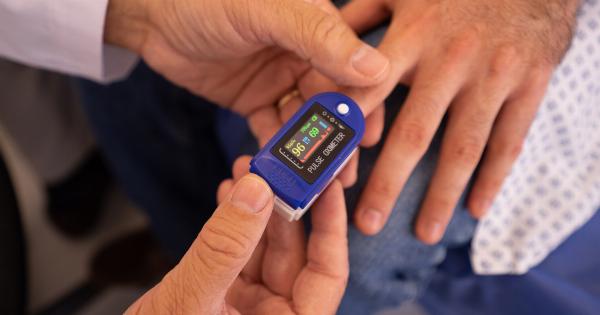Leg artery blockages, also known as peripheral artery disease (PAD), occur when there is a build-up of plaque in the arteries that supply blood to the legs.
This condition can cause pain, cramping, and reduced blood flow to the lower limbs, making it difficult for patients to walk or engage in physical activities. Detecting and accurately diagnosing leg artery blockages is crucial for effective management and prevention of serious complications.
In this article, we explore a fast and reliable test that healthcare professionals use to diagnose leg artery blockages.
What is the Ankle-Brachial Index (ABI) Test?
The ankle-brachial index (ABI) test is a simple and non-invasive diagnostic procedure used to evaluate the blood flow in the legs.
It measures the ratio of blood pressure in the ankles to the blood pressure in the arms, indicating how well blood is circulating through the arteries in the lower limbs. This test is conducted using a regular blood pressure cuff and a handheld Doppler device.
How is the ABI Test Performed?
The ABI test is performed in a clinical setting, typically by a nurse or a healthcare professional trained in vascular diseases. The following steps outline the procedure:.
Step 1: Preparation
The patient is asked to lie down on an examination table, and both arms and legs are exposed.
The professional performing the test ensures that the patient’s skin is clean and free from lotions, as this may interfere with the accuracy of the results.
Step 2: Blood Pressure Measurements
The blood pressure in both arms is measured using a standard blood pressure cuff and sphygmomanometer.
The cuff is wrapped around the upper arm, and the pressure in the cuff is increased until the blood flow in the brachial artery is temporarily occluded. The healthcare professional then slowly releases the pressure in the cuff while listening for the first sound of blood flow using the Doppler device. This determines the systolic blood pressure in the brachial artery.
Step 3: Ankle Blood Pressure Measurements
Similar to the previous step, blood pressure measurements are taken in both ankles.
The blood pressure cuff is placed above the ankle, and the same process is repeated to obtain the systolic blood pressure in the posterior tibial and dorsalis pedis arteries.
Step 4: Calculation of Ankle-Brachial Index
The ankle-brachial index is calculated by dividing the systolic blood pressure in the ankle by the systolic blood pressure in the arm.
For example, if the systolic blood pressure in the ankle is 120 mmHg and the systolic blood pressure in the arm is 140 mmHg, the ankle-brachial index would be 0.86 (120/140).
Interpretation of ABI Results
The ABI results help determine the severity of leg artery blockages. Here is a general guideline for interpreting the results:.
Normal ABI:
An ABI of 1.00 to 1.40 is considered normal, indicating that there are no significant blockages in the leg arteries.
Mild PAD:
An ABI between 0.90 and 0.99 suggests mild peripheral artery disease (PAD). This indicates some narrowing of the arteries but is not severe enough to cause major symptoms.
Moderate PAD:
An ABI between 0.70 and 0.89 indicates moderate PAD. Patients with moderate PAD may experience intermittent claudication, which is leg pain or cramping that occurs during physical activity.
Severe PAD:
An ABI below 0.70 is indicative of severe peripheral artery disease. Severe PAD often causes pain at rest, non-healing ulcers, and an increased risk of tissue damage or amputation.
The Advantages of ABI Testing
The ABI test offers several benefits in diagnosing leg artery blockages:.
Non-Invasive:
The ABI test is a non-invasive procedure that does not involve any needles, dye, or radiation. It is a safe and painless option for patients.
Wide Availability:
The test can be performed in various healthcare settings, including clinics, hospitals, and even primary care offices, making it readily accessible for patients.
Cost-Effective:
Compared to other imaging tests, the ABI test is relatively inexpensive. It provides accurate results without the need for expensive equipment, lowering healthcare costs for both patients and providers.
Highly Accurate:
The ABI test has been extensively studied and proven to be accurate in diagnosing leg artery blockages. It has a sensitivity and specificity of over 90%, making it a reliable tool for healthcare professionals.
Conclusion
The ankle-brachial index (ABI) test is a fast and reliable diagnostic tool for assessing leg artery blockages.
It provides valuable information about blood flow in the legs and helps healthcare professionals determine the severity of peripheral artery disease. With its non-invasive nature, wide availability, cost-effectiveness, and high accuracy, the ABI test plays a crucial role in early detection and management of leg artery blockages, ultimately improving patient outcomes.






























